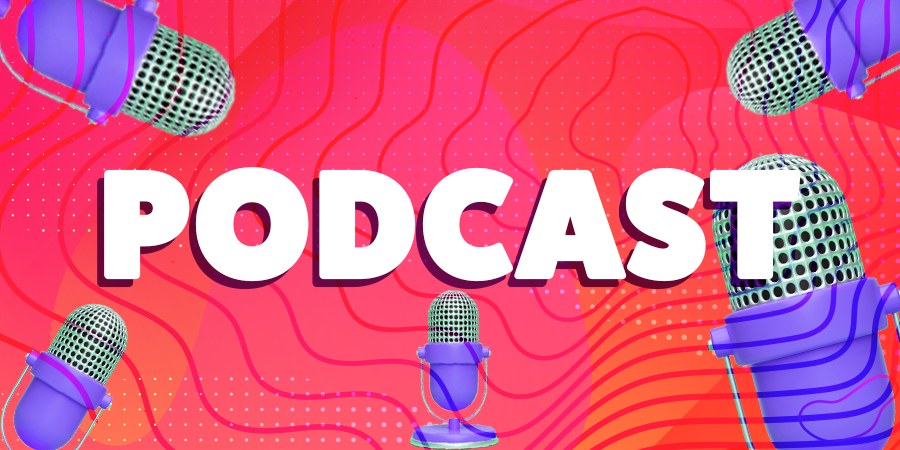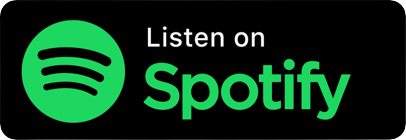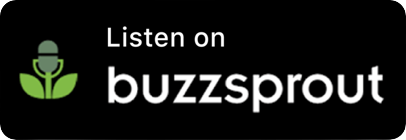Ep 63: Serious Social – Dishing the dirt on data
How much do you know about the Apple push for privacy through iOS14 and the effects it’s having on Facebook ads? If the answer is “not enough”, then this podcast is for you! Tune in to hear from Belle Lawrence as she delves a bit deeper into the subject, exploring the impacts, changes and how you can handle it.
If you’re after more know-how to break the social boring, subscribe now.
Full Transcript
Welcome to the Serious Social podcast, created by the straight-talking social media experts at immediate future.
In this episode, we’re talking about the latest Apple update iOS14. Associate Director Belle Lawrence is dishing the dirt on data and explaining everything possible about the changes and impacts of this update and most importantly, what you can do about it.
Hello, and welcome along to serious social live. Now get ready because today’s session is a little bit of a technical one, I’m going to do my best to distil down everything you need to know, into under 15 minutes. But there will be things that I’m not covering. And there’s a lot deeper information that we could look at in this topic. So bear with me, and feel free to ask any questions as we go along, I will try to answer them.
So, we want a chance of understanding what is going on with Facebook ads, Instagram ads, and the apple update. If you’ve come across this and you’re confused, you’re not alone. It is quite complex. But let’s start with what’s happened.
All right, Apple has released an update iOS 14. If you’re an apple user, then over the last few months, whenever you update or load a new app, you’ll have a pop up notification asking if you’re happy to share your data. Now more than likely, as a user who values their privacy, you and most of civilisation, you’ll have clicked the option saying ask app not to track. The update itself is about Apple’s idfa identifier for advertisers, which is intended to help advertisers measure ad effectiveness, as well as track people and devices. The idfa is essentially a cookie. And I’m hoping, hoping that you’re all fairly familiar with cookies, right? We’ve all heard of them. So that’s a sign to an iPhone that can pick up data across all the apps used, including health and location. This isn’t new, the idfa has always been there. But Apple is apparently now on your side. And with this update, they are trying to give the power back to the user.
Now is this Apple separating themselves from the public perception that big tech is bad and wrong and evil? Well, we won’t digress into that. But since the update, it does look like around 70% of users have opted out of the tracking. What’s interesting about consumer behaviour is that when asked the general consumer will contradict themselves. Research tells us that when asked a consumer will say that they would prefer to see less advertising. However, they will also say in the same survey, that they’d be open to seeing advertising, if it’s relevant and personalised. Now the gap in knowledge for consumers about how ads are personalised is understandable. But of course, that means that when given the option to stop attack tracking them, they’re also likely to see more irrelevant ads, and then they don’t like that. So it’s a bit of a catch 22 for the consumer.
But what does this all got to do with Facebook? Well, the ads algorithm is all based on user data. So prior to this update, the Facebook app could track an individual’s activity on the apps on their phone, including the Facebook app, Instagram, and including Safari and Chrome and other browsers where conversion might happen on a brand site. The data is then stored and segmented by Facebook, it looks at the app most used time that you spend on it, the sites visited and the words that you search. The algorithm then can build a picture of the user. It’s all non personally identifiable. So its anonymised data, but we’re building a picture of that user. Are they a foodie, or a fashionista? Do they have a family? Are they interested in dogs or cats? And if they are a cat person, are they buying cat food online? When a brand or agency then built a Facebook or Instagram campaign, the data about the users is available to build a target audience. Targeting can then be specific and ads can be personalised if we understand that there’s a group of people who love cats, and they’re buying cat food online, we can reach them with our specific personalised pet store ad.
Now the second part is about conversion tracking. Let’s say we’ve served a relevant ad. We see some sales on our brand site great. The data from the idfa could tell us whether that user was shown an ad on Facebook and subsequently went on to convert to purchase as a direct or indirect action. If This data is removed from Facebook’s view, which is what’s happened. There are two results. Firstly, the target audience may be tougher to find. For example, we might find users who are interested in pet accessories, but be unsure if they’re a cat owner or a dog owner. But further than that, the tracking is less able to determine the sale is as a direct result of a Facebook ad. But before you get too concerned and switch on your Facebook ads off, it’s not that the data doesn’t exist, it’s just less available from Apple. Apple still receives this data, but it then passes the limited data back to Facebook. So the brand still gets news of that conversion to purchase, along with the time and date. So it happens, it’s just not quite as connected. Facebook, of course, is keeping advertisers closely apprised of how to deal with these changes so that people don’t pull out of advertising. And for sure it don’t pull out just yet.
Before I get into some top-line recommendations about how you can tackle this and what approach we should take, I will point out that we are more than happy to chat to you about any of the specific challenges that your brand is having this session is by no means going to answer all of your queries. It’s a complex issue. But as Facebook partners, we’re able to get the best advice, so we can help you work through any issues, just get in touch.
Okay, what do we do about this? First, if your brand is not selling online, so you’re mostly concerned with awareness and reach, and you’re then going to be mostly affected by the data limitations, changing your audience sizes, or how you build them. When it comes to trying to be hyper-targeted, we’ve always advocated that you must have enough data points or users effectively in your target audience. The smaller the data set, the harder it is for the algorithm to determine what’s working and then optimise automatically. That’s the magic bit. So you need to build out your audience targeting and consolidate audiences by psychographics. That means really understanding your audience’s closely what their motivations are. That said, You should also look at batching your audiences. So let’s say you’re looking for vegan females, very broad audience. There are loads of affiliated interests, keywords, other things that these vegan females may be interested in, that you can build into your targeting. And it may then be large enough for your audience to apply a narrowing factor such as affluence by age, let’s imagine a more expensive product line that you have is maybe working better with 30 plus females because they’re more affluent, just generalisation. And so you then could batch your age ranges. And this pushes the algorithm in a really strong direction, it gives enough information for that algorithm to say, here’s where I’m going to concentrate my efforts, and then it can work better.
Next, if you are selling online, or you’re looking for app installs, or using catalogues and things like that, you’ll need to know about the changes to tracking. Remember, this does not mean that you can no longer track your conversions, you can iOS 14 users who opted out will now only be tracked for one site side event after clicking on a Facebook ad. If your domain is registered with Facebook, and that’s key, there will be a limit of eight events. An event is a site side action, just to clarify, that can be tracked, Facebook will then automatically assign the events they believe are the most relevant to your business. So it could be a purchase that makes sense or a sign up to a newsletter or some other action, you’ll then be able to optimise to just one event from the eight chosen. The good news here is that Facebook realise this is going to be a challenge. And they are going to launch an event manager to help so watch out for that in the coming months, fingers crossed coming months. Remember, you can and should be using tracking outside of Facebook like UTM through Google Analytics to give you a deeper picture of your user journeys and the path to purchase. If after all this is sorted, you’re looking at reporting just bear in mind that there will be a delay. So the data that Apple shares with Facebook may take three to five days. So ensure you’re not trying to report on success too early in the process. That’s actually just best practice anyway, if you try and understand within 24 hours whether an ad is working or not, you may not have had the volume to let the algorithm work its magic and figure out how to optimise best the how to get you the best result. So you have to give it a little bit of time. You may want to look at a third-party solution for your tracking. If you need to attribute sales or some other conversion hyper accurately. It’s not necessary for everybody but if this is of high importance to your business, you might want to look at a third-party solution.
Okay, one more thing. retargeting we love Facebook for this and natural approach to sequential storytelling. These are the greats, but we have to bear in mind now that Facebook are I’m no longer able to support a 28-day ad click or view or a seven-day ad view attribution window. But the seven-day ad click window is supported. So make sure you’re updating your targeting bills to select this. And also make sure that you’re thinking about that in the journey in the storytelling in the nudge natural approach. In reality, this means that your retargeting will actually reach only the most engaged people who have clicked audiences. And the retargeting of users who’ve engaged with properties on Facebook, like your Facebook page is still available. So there are still plenty of ways that we can create that customer journey. Okay, this is a real minefield of topics.
So if you’ve made it this far, well done, there’s no doubt that this is going to have a big impact for certainly the next few months, it may already be having an impact on your business, but it’s not insurmountable. For starters, there is a massive population out there who are on Android devices, they’re not even on Apple. So this isn’t gonna affect them, you could consider for the time being taking Apple out of your targeting altogether. And focusing on Android while you figure out all of these bits and bobs that I’ve just talked about. With paid social, you have to be ready to test and learn and adapt to find a creative solution. It’s not just about the creative visual, you have to be creative in your targeting and your audience builds and how you put that message out there in order to succeed. And that’s what we love at IF, creativity doesn’t just have to be being visual.
I’m sure there will be questions about this. If they have come through, I’m not going to try and answer them now because we’ll probably run out of time. But do get in touch. You can ping us through on any of our social media, or obviously, email us and there will be a blog to follow up there which will give you a little bit more information. Don’t forget, you can also go back and watch all of our previous serious social episodes as a video or a podcast. And join us again next week when Katie and Sophie will be tackling TikTok. Fingers crossed that’s a bit of a less complex conversation. I mean, I don’t know but hopefully. So for now, I’m going to sign off. Give us a call if you want any more help. Thanks so much for joining me. Bye
If you’re after more know-how to break the social boring, subscribe now and check out the show notes for links to our website and social profiles.



